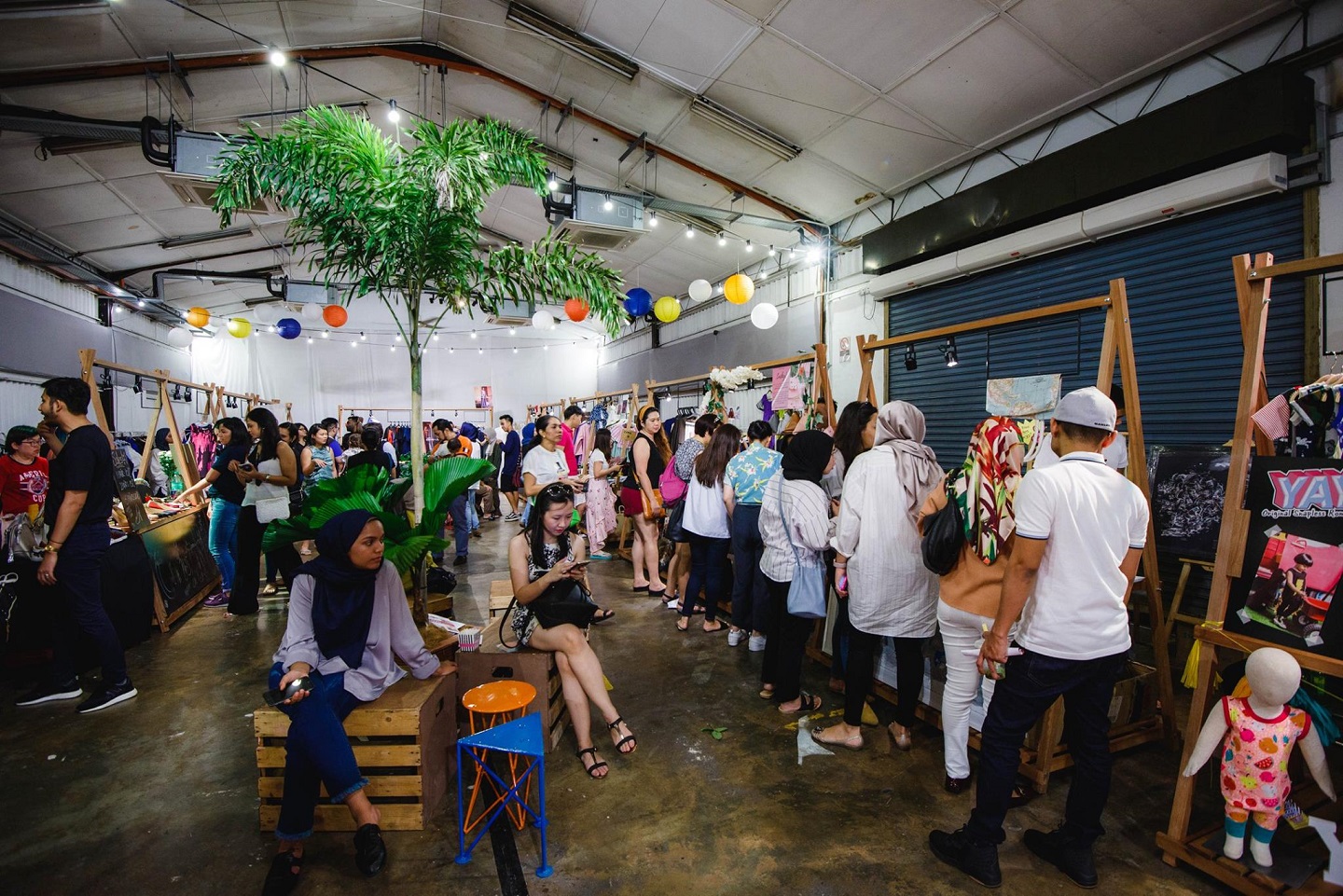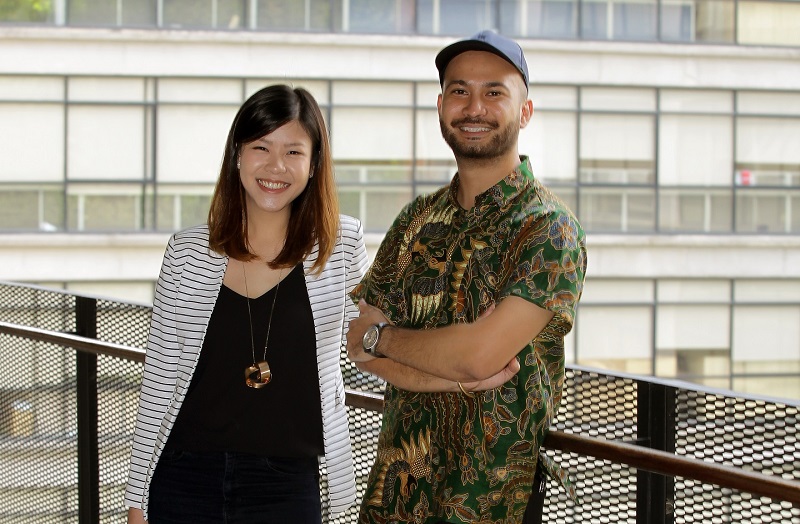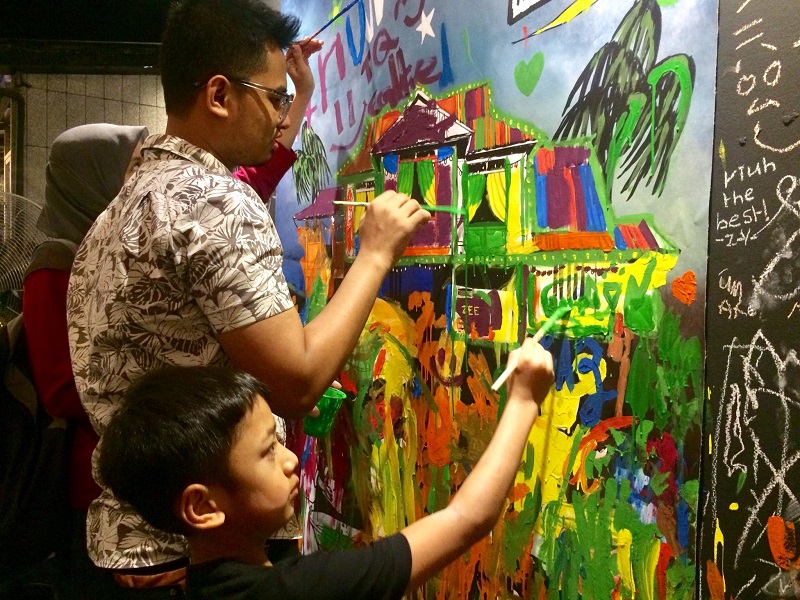
Riuh brings together vendors of artisanal products, artists and performers in one venue to showcase their work (Photo: Riuh)
One weekend every month, APW Bangsar is transformed into a platform for various creative expressions and businesses. The weekend soiree known as Riuh, which began last August, brings together vendors of artisanal products, artists and performers in one venue to showcase their work. Under the purview of MyCreative Ventures Sdn Bhd, Riuh’s objectives are in line with the government investment arm’s aim — to spur Malaysia’s creative industry via strategic and innovative funding, through equity or debt investments.
“Traditionally, we have been in the business of giving out loans to creative businesses but in our fifth year — that is, last year — our shareholders urged us to do more for the industry. The main purpose of MyCreative after all is to help elevate the creative industry and economy in Malaysia,” explains MyCreative head of legal Affendy Ali Dally, who plays an instrumental role in the running of Riuh.
Affendy recalls the many brainstorming sessions that took place with MyCreative Ventures’ former CEO Johan Ishak before the debut of the monthly creative platform. Artbox in Bangkok, Brightspot Market in Jakarta, Public Garden in Singapore, and Covent Garden and Old Spitalfields Market in London were the benchmarks for Riuh during its formative stage.
At present, Affendy and Riuh’s chief operating officer Melissa Low jointly run the event with a small team.
“We do not see it as a just a bazaar or a market but as merging the creative community and the community at large,” says Affendy, who was previously in legal practice with Raja, Darryl & Loh before he “took a leap of faith” to join fashion design house Tsyahmi, where he managed legal and communication matters. Today, he has a hybrid role, running Riuh (all aspects of branding, communications and social media) in addition to managing MyCreative Ventures’ legal matters.

“Riuh was created as the distribution arm for MyCreative to showcase the products and talents that the company works with … We decided that Riuh would have the DNA of three elements. Firstly, to shop — these are the pop-up stores. Secondly, to educate — through the workshops. And lastly, to cultivate creativity — through live performances. Each Riuh is structured in a way that all these elements are present,” Low says.
The three divisions are successfully integrated into Riuh through strategic partnerships with Cendana — a division of MyCreative Ventures — connecting Riuh with bands, dancers, buskers and many other artists. The organisers also try to incorporate a cultural aspect besides the evident ones relating to the local festivals that a particular edition might coincide with. One example is the Jo’oh Dance performance by the Mah Meri Cultural Club in Riuh’s February edition.
Psychology graduate Low began her career as a management trainee at CIMB Investment Bank Bhd before joining the investment section of MyCreative Ventures five years later. She set up and subsequently headed the company’s business development branch, which oversees Riuh.
“Riuh’s target market is urbanites, the M40 group. The products sold in our pop-up stores are more designer based. So, Bangsar is a good location for us and it so happens that APW is a venue space located in Bangsar, so we chose it,” Low says, explaining the challenge of finding the right location. Another challenge was anticipating visitors’ reception. “Naturally, we were also worried about visitors. I’m not sure if it is a Malaysian or global mindset, but people tend to be sceptical about supporting local products. We have been lucky in that our vendors are very tasteful and informative,” she says, adding that along the way, Riuh has also become a platform to educate visitors on homegrown brands.

Another challenge was determining workshop pricing. “In Malaysia we appreciate art and creativity but we do not have the economic appreciation that goes with it,” Affendy says, adding that they have since discovered the sweet spot in terms of pricing that is acceptable to both the workshop organisers and participants.
The challenges have evolved over time and these days, the overwhelming response means having to turn some vendors away. “It is difficult to say no,” Low says. “But we choose the vendors that fit the month’s theme and try to have every sector from the creative industry, for instance, fashion, design, visual arts, literature.”
Above all, the ultimate challenge is innovation. “We don’t want our visitors to get Riuh fatigue! Innovation is key for us and we find creative ways to get around this,” Affendy says. “Our first and main element is collaboration. Secondly, to diversify the activities and lastly, the look and feel of Riuh.
Affendy cautions, “On the third element and at the risk of sounding a bit shallow, we must acknowledge the fact that we live in a very social-media savvy era and that’s how we attract visitors as well — through Instagramable moments.”
The relationship between Riuh and the vendors is not only beneficial to both parties but also to consumers who get to touch and feel the products, especially brands without bricks-and-mortar stores. From a commercial standpoint, Affendy finds this helps consumers better understand brands, their workmanship and pricing. “It is also good for emerging designers to gain exposure and feedback to tailor their products accordingly,” Low adds.
Referring to research conducted by The Business of Fashion website, which found that the popularity of shopping malls is on the decline, Affendy says, “Riuh is an alternative to the traditional retail system, whereby we have fresh elements and bits and pieces of everything that consumers enjoy … It is a newfound way of retail.” Based on Riuh’s popularity thus far, it is one that has proven effective.
Although Low and Affendy point out the clear distinction between Riuh and other bazaars and markets that bear some similarities with it, they also advocate the growth of the latter. “We don’t see similar events as competition. We feel it is good that other people are doing it because the ecosystem is so small and the market players need the exposure,” says Affendy.
“Competition can also be a good thing for Riuh because it is precisely what we want to achieve — to get people to see how lucrative and beneficial the creative industry can be (to the economy),” Low adds.

What many of us may not know is that Riuh was meant to be nomadic. The duo think the creative platform might have overgrown the current space. “It was a great place for us to start, but we would like to conduct more workshops and live performances,” says Low, adding that the team is in search of an event space that caters for both indoor and outdoor activities. In fact, Affendy says his ultimate dream is for Riuh to have its own space where “we can conduct not only monthly but weekly activities”. Low also hopes to incorporate brands from Singapore, Brunei and Jakarta in the future. “As we grow, we also want some form of knowledge exchange. Hopefully, one day, through our network, it will be possible to take our Malaysian vendors abroad.”
At this point, it remains to be seen where Riuh — now a monthly staple on the city’s calendar of events — will venture into next but there is no doubt it will bring with it the convivial vibrancy that it has become synonymous with. In fact, it is the community spirit that motivates the team to keep going. Affendy says, “Parents and their kids as well as people of different races and communities come here together and to me, that is the satisfaction I get from organising Riuh.”
This article first appeared on June 11, 2018 in The Edge Malaysia.


